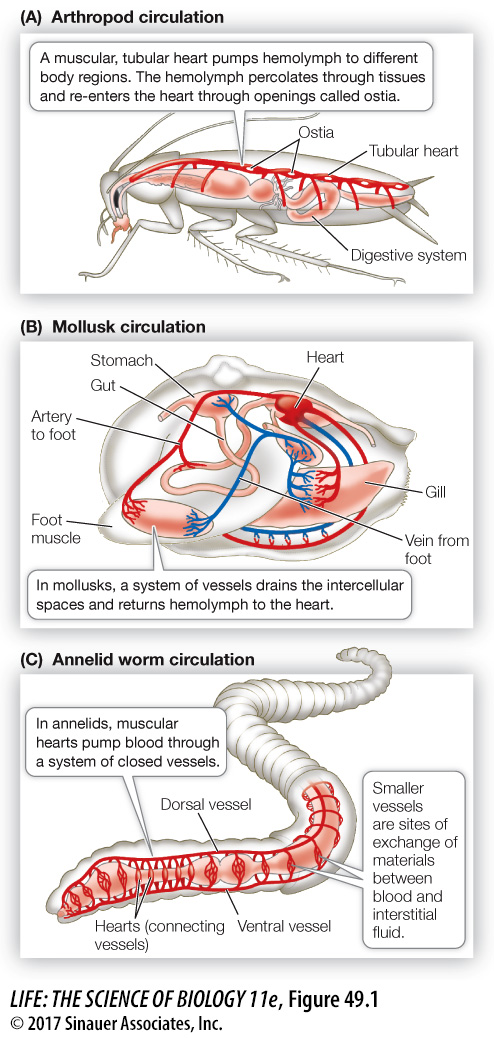Open circulatory systems move extracellular fluid
Open circulatory systems are found in arthropods, mollusks, and some other invertebrate groups. In these systems a heart moves the hemolymph through vessels leading to different regions of the body. The fluid leaves the vessels to filter through the tissues before returning to the heart. In the arthropod shown in Figure 49.1A, the fluid returns directly to the heart through openings called ostia. Ostia have valves that allow hemolymph to enter the relaxed heart but prevent it from flowing in the reverse direction when the heart contracts. In a mollusk such as a clam, open vessels collect hemolymph from different regions of the body and return it to the heart (Figure 49.1B).

Lest you think that open circulatory systems are inefficient and can support only sluggish lifestyles such as those of mollusks, remember that crabs scuttling along the beach, yellow jackets buzzing around your picnic, and scorpions dashing across the desert all have open circulatory systems.